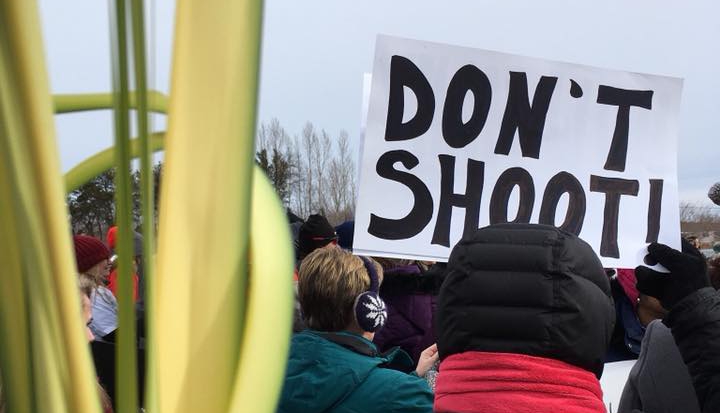The holiest of weeks began in procession, then and now. At some point we exchanged dirt roads and donkeys for concrete sidewalks and poster board, but the ritual remains timeless: come together, sing out, march.
On Saturday morning I attended the March for Our Lives in Sartell, Minnesota. It was one of hundreds of marches organized around the world to demand freedom from gun violence. It felt like a modern version of Jesus’ procession into Jerusalem.
Crowds gathered, unsure of when the next tragedy would strike but strengthened by seeking justice together. We waved signs and chanted, “Love not hate will make America great.” A 2018 take on laying down palms and singing “Hosanna in the highest”?
We followed giggling children clad in bright puffy jackets. Christ, wearing rags and riding a donkey, did not look like your typical leader, either. But he marched into Jerusalem anyway, with the threat of violence and suffering looming large. Our young people hop on school busses each day facing the same threat. How long, O Lord?
I walked with a handful of palm branches during the march because I can’t untangle the sacred from the secular. To take seriously the commissioning at the end of Mass to “go in peace, glorifying the Lord by your lives” is to live a life of faith in the world. We gather in the church building only to be sent out again. Worship and the world should reflect one another.
In this light, the timing of the march made perfect sense. We started the season of Lent by marking our foreheads with ashes on February 14. It was the same day 17 people had their bodies turned to ash when a gunman opened fire at Stoneman Douglas High School.
The same red we see pooled outside lockers and splattered across desks decorates altar clothes and vestments on Palm Sunday. Students gunned down in classrooms are today’s Christs being nailed to the cross. The tears of their parents and teachers fall just like those of the women at the foot of the cross.
The parallels could go on. They point to this: living faith and seeking justice cannot be separated.
If as an Easter people, we truly believe in the hope we will preach next Sunday—that Jesus won by rising, that life beats death and that darkness will never overcome light—then aren’t we called to help make this vision a reality? I saw thousands of people witness to this hope on Saturday. It was inspiring.
We marched because we have hope that the world can be a more peaceful place. We have hope that our elected leaders can make policies that protect the common good. We have hope that guns and those who shoot them will stop ending innocent lives.
Suffering, death and resurrection: onward we march through the Christian story.
Image: Jessie Bazan











Add comment